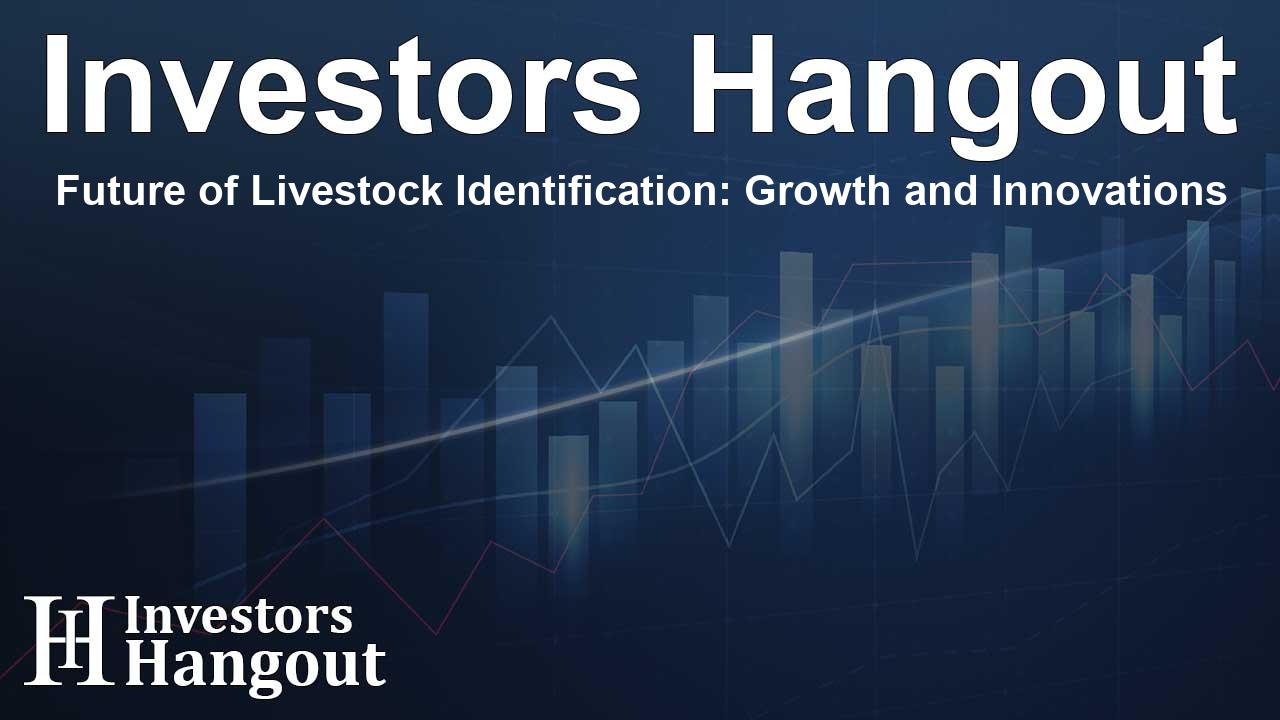Future of Livestock Identification: Growth and Innovations

Understanding the Growing Livestock Identification Market
The livestock identification market is on the brink of significant expansion. Currently valued at USD 1.74 billion, it is projected to reach a noteworthy USD 2.78 billion by 2031. This rapid growth reflects a compound annual growth rate (CAGR) of 8.1%. The primary drivers of this growth stem from a heightened necessity to minimize livestock losses and mortality rates through efficient animal disease management and traceability.
Impact of Technology on Livestock Operations
In recent years, the advent of automation and Internet of Things (IoT) technologies has revolutionized livestock farming. Farmers can now monitor operations with unprecedented accuracy and efficiency. With the integration of advanced livestock identification systems, farmers are empowered to make data-driven decisions that enhance productivity and optimize resource usage. Real-time animal tracking significantly contributes to better health management, minimization of losses, and overall operational efficiency.
Market Insights and Forecast
With sustained advancements, the livestock identification market is poised to maintain its upward trajectory. The increasing reliance on technology in farming practices emphasizes the need for efficient identification and tracking systems. The market is expected to show fluctuations based on technological innovations, regulatory changes, and shifting consumer demands in agriculture.
Segment Analysis: Cattle to Dominate
Among various livestock types, cattle are projected to dominate the market share significantly. Effective cattle identification is crucial for profitability in the cattle business. Traditional identification methods tend to be cumbersome and time-consuming, particularly in larger operations. Hence, there is a compelling shift towards automated identification systems that streamline processes and enhance productivity.
The Role of Hardware in Livestock Management
Within the livestock identification market, the hardware segment is believed to contribute the most substantial share. This segment includes electronic and visual identification systems, such as tags and readers. The rising adoption of these technologies across farms highlights their importance in managing livestock. Such devices not only assist in tracking livestock but also provide essential data regarding their health, age, and reproduction status, which are vital for effective management decisions.
Regional Market Trends
Regionally, the livestock identification market is anticipated to see significant growth, particularly in Europe. The evolving regulations focus on precise animal identification in the European Union have stimulated the demand for advanced livestock management systems. Additionally, the rising popularity of poultry meat creates further opportunities for growth as the overall demand for livestock products continues to rise.
Challenges and Opportunities Ahead
The journey of the livestock identification market is not without challenges. One major hurdle is the environmental impact of livestock production, particularly concerning greenhouse gas emissions. However, opportunities abound, particularly in the integration of blockchain technology, which can enhance traceability and transparency in livestock management. As stakeholders continue to seek innovative solutions to existing challenges, the sector is likely to see substantial investments and growth.
Conclusion
The livestock identification market is set for a substantial evolution, fueled by technological advancements and growing consumer demands. As farmers increasingly adopt innovative solutions for livestock management, the future looks promising for this sector. Staying ahead of trends, understanding regional regulations, and investing in automation technology will be key to thriving in this dynamic environment.
Frequently Asked Questions
What is the projected value of the livestock identification market by 2031?
The livestock identification market is projected to reach USD 2.78 billion by 2031, growing at a CAGR of 8.1%.
Why is technology important in livestock identification?
Technology enhances data-driven decision-making, improves animal health monitoring, and streamlines farm operations.
Which livestock type is expected to dominate the market?
The cattle segment is expected to account for the largest market share in the livestock identification market.
What are some key drivers of the livestock identification market?
Growing demand for disease traceability, efficient management, and advancements in automation technology are primary market drivers.
How does the European market influence global trends in livestock identification?
Regulations in Europe regarding animal identification boost demand for advanced technologies, impacting global livestock management practices.
About The Author
Contact Hannah Lewis privately here. Or send an email with ATTN: Hannah Lewis as the subject to contact@investorshangout.com.
About Investors Hangout
Investors Hangout is a leading online stock forum for financial discussion and learning, offering a wide range of free tools and resources. It draws in traders of all levels, who exchange market knowledge, investigate trading tactics, and keep an eye on industry developments in real time. Featuring financial articles, stock message boards, quotes, charts, company profiles, and live news updates. Through cooperative learning and a wealth of informational resources, it helps users from novices creating their first portfolios to experts honing their techniques. Join Investors Hangout today: https://investorshangout.com/
The content of this article is based on factual, publicly available information and does not represent legal, financial, or investment advice. Investors Hangout does not offer financial advice, and the author is not a licensed financial advisor. Consult a qualified advisor before making any financial or investment decisions based on this article. This article should not be considered advice to purchase, sell, or hold any securities or other investments. If any of the material provided here is inaccurate, please contact us for corrections.
